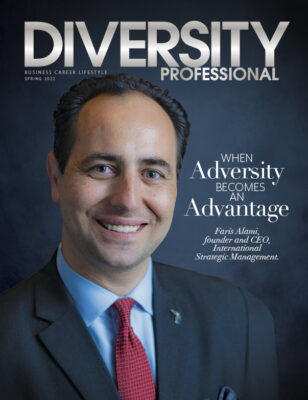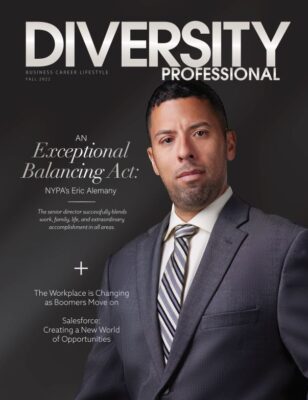Innovations In Talent Development
The PhD Project and the business side of STEM.
Across the U.S., our leaders in government and business are concerned about the nation’s ability to retain its longstanding global leadership in innovation for the technology industry. The key, many say, is to attract and retain the best human capital—the best talent—to careers in technology.

One often overlooked path to increasing student, including minorities, participation in the technology sector is business school. While different universities have different names for it, it is common for business schools to offer a degree in Information Systems, which is some what different than computer science or information technology—but leads to technology careers.
Business school professors Sonja Wiley of Louisiana State University and Laura Trevino of the University of Texas-El Paso are reaching into high schools, middle schools and even elementary schools with robots and games to excite minority children about a future career in technology.
John Warren, a professor and assistant dean at the University of Texas-San Antonio business school, is faculty adviser to several campus clubs, where he turns minority students on to those same opportunities and persuades them to pursue a major in his department.
Drs. Wiley, Trevino and Warren are letting minority students in on one of the best-kept secrets in technology: You can prepare for a tech career and land a great job with an undergraduate degree in—business.
These three, minorities themselves, are among numerous educators around the country spreading the message to African-American, Hispanic-American and Native American young people. But a challenge remains: As too few minorities work in tech, there are too few minority professors to be role models and mentors who will encourage minority students to study technology.

“When students think, ‘What am I going to major in?’ They really want to see someone in the field who looks like them ,” says another trailblazing African-American business technology professor, Dr. Adriane Randolph of Kennesaw State University. “They think, ‘I’m going some where I will feel welcome and find somebody who understands me and can mentor me.’ Too often in the technology field, they just see white males.”
A national organization is working to improve minority representation in the technology sector by helping more African-, Hispanic- and Native Americans become business professors who will in turn help minority undergrads attain technology careers. Many of them, like Drs. Wiley and Trevino are going further by reaching young children also.
Since its inception, The PhD Project, created by the KPMG Foundation, Citi, GMAC and AACSB International and funded by other leading businesses and academic groups, has more than quadrupled the number of minority professors teaching business technology.
Many people think programming is 90 percent of the technology pie. But it’s just a small piece of the pie.
The key to how a business degree leads to a technology career lies in a little understood discipline that many future “techies” are unaware of: a major called Information systems (IS) at many colleges or a similar name.

The IS discipline is broader than computer programming. It’s been defined as the information and communication systems that organizations use. It’s figuring out how to take the programs that computer scientists and engineers invent, and put them to work running businesses.
It exists because technology today is no longer the sole province of engineers; it is fully embedded into the heart of how businesses and organizations function.
“Anywhere employers are using (technology) systems our students can go,” adds Dr. Warren.
That, of course, is everywhere.
Dr. Warren and his PhD Project colleagues have seen IS students land jobs at Apple, Google, KPMG, ExxonMobil, GE, Johnson & Johnson, Shell Oil, IBM, and many others. They work in such fields as cybersecurity, networking, database management, systems analysis, and more. Dr. Wiley is teaching and doing research to modernize health care by helping doctors and nurses use technology more.
“We build the systems that businesses use,” explains another PhD Project professor, Donna Grant, a department chair at the North Carolina Central University business school.
PhD Project professor Alisha Malloy, of the same college, adds, “Many people think programming is 90 percent of the technology pie. But it’s just a small piece of the pie.”
Other PhD Project professors engage when IS undergrads start thinking about careers. Dr. Olukemi Sawyerr heads a new lab where Cal Poly Pomona students take ideas from drawing board to board room. Also at that college, Dr. Cheryl Wyrick addresses ‘the business side of STEM” as the business school’s interim dean.
All these professors work on campus, and off, to literally change the face of the technology industry. “To get more minority students and women into our classrooms, we have to go beyond—out into the schools and the communities,” says Dr. Wiley.
That, she explains, reaches toward The PhD Project’s goal of more diversity in business workplace. “We were blessed to be a part of the PhD Project. With any blessing come[s] responsibility. Ours is to reach out and give back.”









